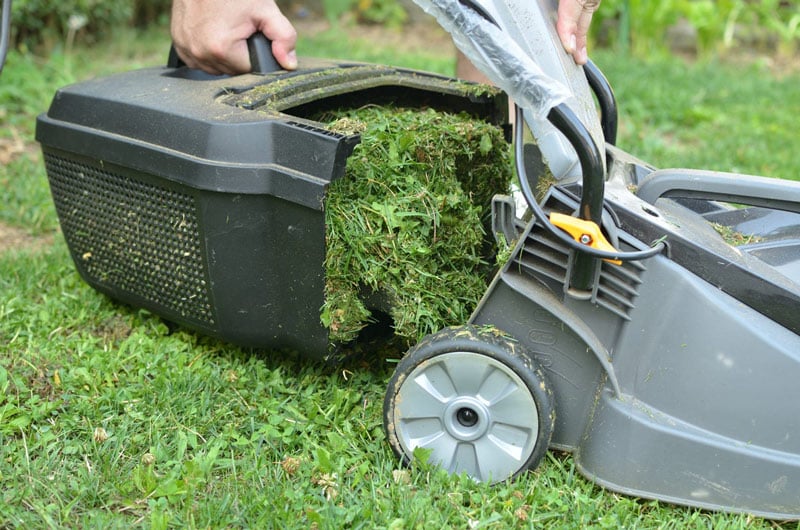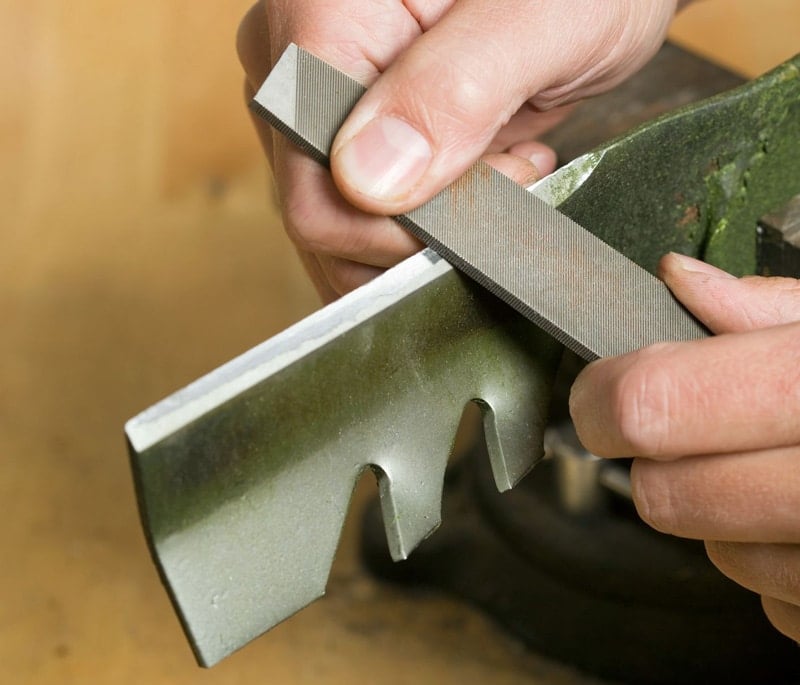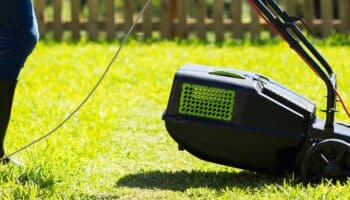One of the great things about lawn mowers are the leftover grass clippings.
Yes, you read that right. The leftover clippings are great. Now they can be a slight pain to clean, especially when they stick to your legs and shoes after taking care of your lawn on a nice day. But that’s the basic cost of doing business.
What you can’t deny is their usefulness. Clippings can be used as mulch for flower beds or in composting bins. They can also just be left where you mowed to decompose and become natural fertilizer for your lawn.
If you think of it, that’s one of the benefits of having a grass catcher bag for your mower. It doesn’t have to be there to catch grass so you can throw those clippings away. It can help transport your clippings to your flower beds or composting bins. Grass catcher bags become your easy and efficient clippings transporter.
That is unless the lawn mower isn’t catching grass as it’s designed to.
If your mower isn’t picking up grass the way it’s supposed to, don’t worry. Below you’ll find nine easy fixes to try out on your mower and hopefully correct whatever the issues may be.
So, let’s get to fixing so your mower can get back to picking…up grass like it was designed to!
Try These 9 Fixes
1. The Grass Catcher Bag is Already Full
Perhaps you just started mowing or haven’t mowed enough for the bag to already be full. It doesn’t mean the bag isn’t worth checking out and making sure it is, indeed, empty.
Don’t shake your head just yet. Think about it. The last time you mowed, did you remember to empty the bag when you were done? Maybe you were in a hurry and just put the mower away and forgot to take the bag off and empty it.

Worse mistakes have been made. Also, it doesn’t hurt to check to eliminate it as a possible problem. If it is full, well, you’ve identified the problem. Now you need to empty it and move on.
2. The Grass Catcher Bag is Installed Incorrectly
If this is the issue, it’ll take you about five seconds to realize it. Start mowing and look at the bag. Do you see grass clipping blowing out of a section between the mower and the bag?
If the answer is yes, then you know the bag is installed incorrectly, particularly at the spot where the clippings are blowing out instead of in.
This should be an easy fix.
3. The Grass Catcher Bag is Damaged
If you’re doing a visual inspection of your mower before using it, you should pick up on any damage to the catcher bag as part of your pre-mowing ritual. However, the catcher bag is also an item that’s easy to overlook since it doesn’t have anything to do with starting and stopping the mower itself.
Also, it is a bag and is prone to tearing. Or it may be older and years of use and natural deterioration have caught up to it. It’s not surprising to once and a while find damage that can cause the grass to miss the bag completely.
If you do find damage, you’ll probably have to replace the bag. At a minimum, you’ll have to do a temporary repair. Either way, you’ve found the issue.
If you want to get any replacement part – or see how much one would cost – click to enter your model number in the search bar below. Our partners at AppliancePartsPros stock almost every part with free guides on how to install them.

4. The Grass Shoot is Clogged
Here’s a good reason to clean after every mow. It’s also one of the areas often missed after a mow.
Yes, you swept up. Wiped down the mower. Emptied the bag. You did everything you were supposed to.
Or did you?
Maybe you forgot to make sure the grass shoot was cleared. You know, the little space that separates the underside of the mower from the catcher bag? It’s one of the easiest places for clippings to collect and, if damp, get matted down and clog the path.
If it does have grass collected in it, go ahead and clean it out and see if that helps correct your issue.
5. Speaking of Mower Blades
While you’re inspecting your grass shoot, take a look at your mower blades. Are they damaged? Are they installed correctly? Do they need sharpening?
Blades that are damaged will work inefficiently, which means your grass will be mowed inefficiently. That doesn’t just mean a badly cut lawn, it might mean hardly any cutting at all. This would explain why you have hardly any to zero clippings being picked up. Your blades just aren’t cutting or cutting enough to pick up.
If the blades are installed incorrectly, or upside down, your mower won’t be creating an effective vacuum under the mower deck. That will prevent clippings from being sucked into the bag. The easiest way to check the installation is to visually inspect the position of the sail (the part of the blade that curves).
If it curves up toward the deck, it’s installed correctly.
If, however, it’s curving down, then the blade is cutting but naturally knocking the clipping back down to the ground instead of up and into the bag.

6. Uneven Ground
Are you mowing on uneven ground?
Let’s back up a second.
Are you mowing any area outside of the area you would normally mow? In other words, was your mower picking up grass just fine anytime you were mowing your nice, flat lawn but today you decided to mow a hill or ditch and now your mower is having issues picking up grass?
Why is this important?
Well, if you’re mowing uneven ground and now having problems catching grass, it’s probably because you’re mowing uneven ground and the mower is doing what it’s designed to do.
Think of it this way. If you’re mowing a narrow ditch, for example, and the wheels on the left side of the mower are on the side of the ditch that slopes up one way and the wheels on the right side of the mower are on the side of the ditch that slopes up the opposite way, how much space do you have under your mower?
More space than your regular lawn.
If you can imagine it, you have a lot more space under your mower than your blades would normally cut. More space under your mower means less vacuum under your mower. This leads to more clippings on the ground and less in the bag.
The same goes for any terrain that causes part of your mower to be higher than another part. If the grass under the blades isn’t pretty even, you’re going to have inefficient grass pick-up.
7. Mower Wheel Height
How tall was the grass the last time you mowed? Was it higher and thicker than normal? Did you adjust your mower’s wheel height higher so the blades wouldn’t get bogged down or stall?
This time, though, you haven’t let the grass get as high or thick but did you lower the wheels back down since last time?
It’s another one of those things that’s easy to overlook but wheel height can have the same effect as mowing uneven terrain. If the wheels are higher and the grass is shorter, your mower will have more room under the blades. More room means more clippings on the ground and less in the bag.
8. Wet Grass
If the grass is wet, you probably already know this is more than likely the problem you’re having. Mowers and wet grass aren’t friends and wet grass doesn’t like to be picked up.
No, wet grass likes to mat and clump and collect on the surface area under your mower deck on the blades and in the grass shoot.
Wet grass pretty much likes to collect everywhere but in the catcher bag.
Wait until the grass dries and try again. You’ll more than likely be picking up grass with little to no issues.
9. Speed
Okay, your mower is running and cutting. You’ve addressed the other issues listed so far and everything seems to be just fine but your mower still isn’t picking up grass clippings.
If this is the case then you need to ask yourself does the mower sound like it normally does? When you’re pushing and mowing, does it sound the same or weaker? Are there periods where it feels like the blades may be spinning faster, then slower, then faster again? Or does it feel like it’s just slower, even though your power supply is good to go?
If this is the case, then you may have engine or motor issues (depending on the type of mower you have) or even a drive system issue. You should, at this point, consult your manufacturer’s manual for troubleshooting problems with mower RPMs and drive controls or have it serviced by a professional.
Conclusion
When you have a mower that’s designed to pick up grass and isn’t doing it, it’s easy to get frustrated.
However, if you walk through the nine possible issues above, you’ll more than likely find the solution is simple and easy to address without letting frustration get the better of you.









